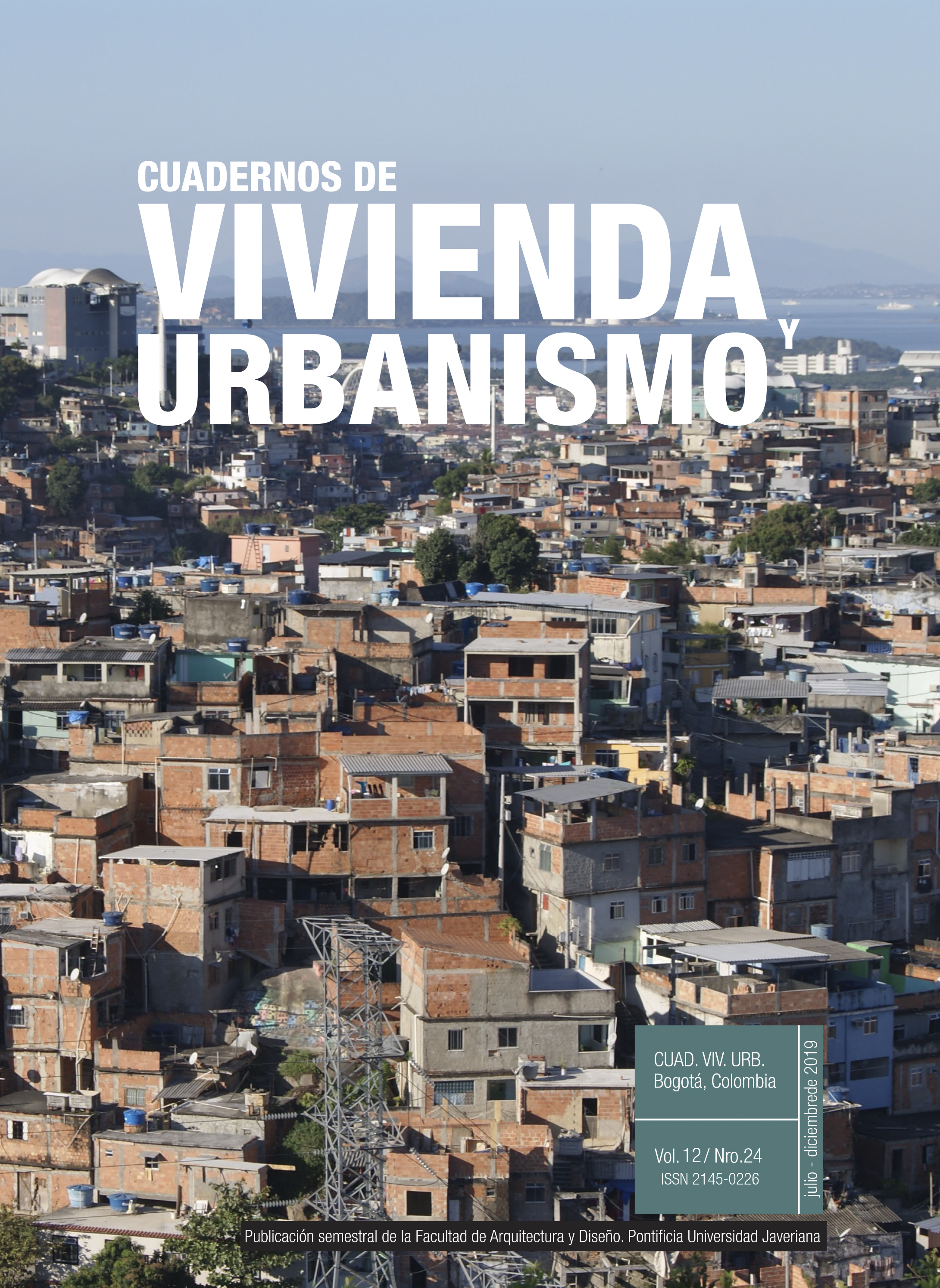Abstract
This research, entitled Protohabitat, deals with the arrangement of a neighborhood prototype planned according to criteria of environmental, social, economic and cultural sustainability in developing countries. Such a neighborhood integrates, on one hand, an experimental prototype of incremental housing built with improved traditional materials and systems of construction and, on the other hand, the use of new technologies. This article presents the proposal developed for the city of Manta (Ecuador), which is implementing fairly well some urban models and building typologies foreign to their social, environmental, and cultural conditions. Backed by the Spanish Agency for International Development Cooperation (Aecid, Spanish acronym) and based on a holistic vision, this work has integrated all the habitat levels, from the urban to the constructive development, starting from the specific socio-spatial considerations in the place but also including those parameters already assumed, tested and commonly accepted by the best urban culture
AL21 Red de Redes de Desarrollo Local Sostenible y Agència d’Ecologia Urbana de Barcelona. (2013). Sistema de indicadores y condicionantes para ciudades grandes y medianas. Recuperado de https://www.ecourbano.es/blog/wp-content/uploads/2011/05/indicadores-ciudades-grandes-y-medianas.pdf
AUC Revista de Arquitectura. (2011). (29-30).
Ayestarán-Úriz, I. (2012). Complejidad y paradigmas de la sostenibilidad global. Ponencia presentada en XVII Congreso de Estudios Vascos: Innovación para el progreso social sostenible. Recuperado de https://www.euskomedia.org/PDFAnlt/congresos/17/13231332.pdf
Bouillon, C. P. (2012). Un espacio para el desarrollo. Los mercados de vivienda en América Latina y El Caribe. Washington, D. C.: Banco Interamericano de Desarrollo.
Bureau Ejecutivo de Ciudades y Gobiernos Locales Unidos. (2010). Documento de orientación política “La cultura es el cuarto pilar del desarrollo sostenible”. Ciudad de México: Ciudades y gobiernos locales unidos.
Camino-Solórzano, A. M. (1998). Evolución y características tipológicas de la vivienda en Manabí, Ecuador (tesis doctoral inédita). Universidad Politécnica de Cataluña, Barcelona, España.
Correa, C. (2008). Un lugar a la sombra. Barcelona: Fundación Caja de Arquitectos.
Del Caz-Enjuto, M. R., Gigosos-Pérez, P., y Saravia-Madrigal, M. (2002). La ciudad y los derechos humanos. Una modesta proposición sobre derechos y práctica urbanística. Madrid: Talasa.
Gaffron, P., Huismans, G., y Skala, F. (2008). Proyecto Ecocity. Manual para el diseño de ecociudades en Europa. Bilbao: Bakeaz.
Grupo de expertos sobre medio ambiente urbano. (1996). Ciudades Europeas Sostenibles. Bruselas: Comisión Europea. Dirección General XI. Medio Ambiente, Seguridad Nuclear y Protección Civil. Recuperado de https://www.upv.es/contenidos/CAMUNISO/info/U0595456.pdf
Hall, P. (1996). Ciudades del mañana. Historia del urbanismo en el siglo XX. Barcelona: Ediciones del Serbal.
Hernández-Aja, A. (1997). La ciudad de los ciudadanos. Madrid: Centro de publicaciones, Ministerio de Fomento.
Hernández-García, I., Hernández-García, J., y Niño-Bernal, R. (2012). Visiones alternas de ciudad: complejidad, sostenibilidad y cotidianidad. Revista Bitácora Urbano Territorial, 20(1), 67-77.
Instituto Nacional de Estadísticas y Censos de Ecuador (INEC). (2017). Datos sobre población. Recuperado de https://www.ecuadorencifras.gob.ec/ecuador-en-cifras/
Jacobs, J. (2011). Muerte y vida de las grandes ciudades. Salamanca: Capitán Swing.
Pozueta, J., Lamíquiz, F. J., y Porto, M. (2009). La ciudad paseable. Madrid: Centro de publicaciones, Ministerio de Fomento.
República del Ecuador. (2009). Plan Nacional para el Buen Vivir 2009-2013: construyendo un Estado Plurinacional e Intercultural. Quito: Secretaría Nacional de Planificación y Desarrollo.
Rocha, M., y Jové, F. (2015). Técnicas de construcción con tierra. Lisboa: Argumentum, 2015.
Rueda, S., de Cáceres, R., Cuchí, A., y Brau, L. (2012). Urbanismo ecológico. Su aplicación en el diseño de un ecobarrio en Figueres. Barcelona: Agència d’Ecologia Urbana de Barcelona.
Sáinz-Guerra, J. L., y Camino-Solórzano, M. (2013). Hábitat social digno, sostenible y seguro en Manta, Manabí, Ecuador. Manta, Ecuador: Aecid, Uleam y UV.
Sánchez de Madariaga, I. (2004), Urbanismo con perspectiva de género. Sevilla: Junta de Andalucía/Fondo Social Europeo.
This journal is registered under a Creative Commons Attribution 4.0 International Public License. Thus, this work may be reproduced, distributed, and publicly shared in digital format, as long as the names of the authors and Pontificia Universidad Javeriana are acknowledged. Others are allowed to quote, adapt, transform, auto-archive, republish, and create based on this material, for any purpose (even commercial ones), provided the authorship is duly acknowledged, a link to the original work is provided, and it is specified if changes have been made. Pontificia Universidad Javeriana does not hold the rights of published works and the authors are solely responsible for the contents of their works; they keep the moral, intellectual, privacy, and publicity rights.
Approving the intervention of the work (review, copy-editing, translation, layout) and the following outreach, are granted through an use license and not through an assignment of rights. This means the journal and Pontificia Universidad Javeriana cannot be held responsible for any ethical malpractice by the authors. As a consequence of the protection granted by the use license, the journal is not required to publish recantations or modify information already published, unless the errata stems from the editorial management process. Publishing contents in this journal does not generate royalties for contributors.



